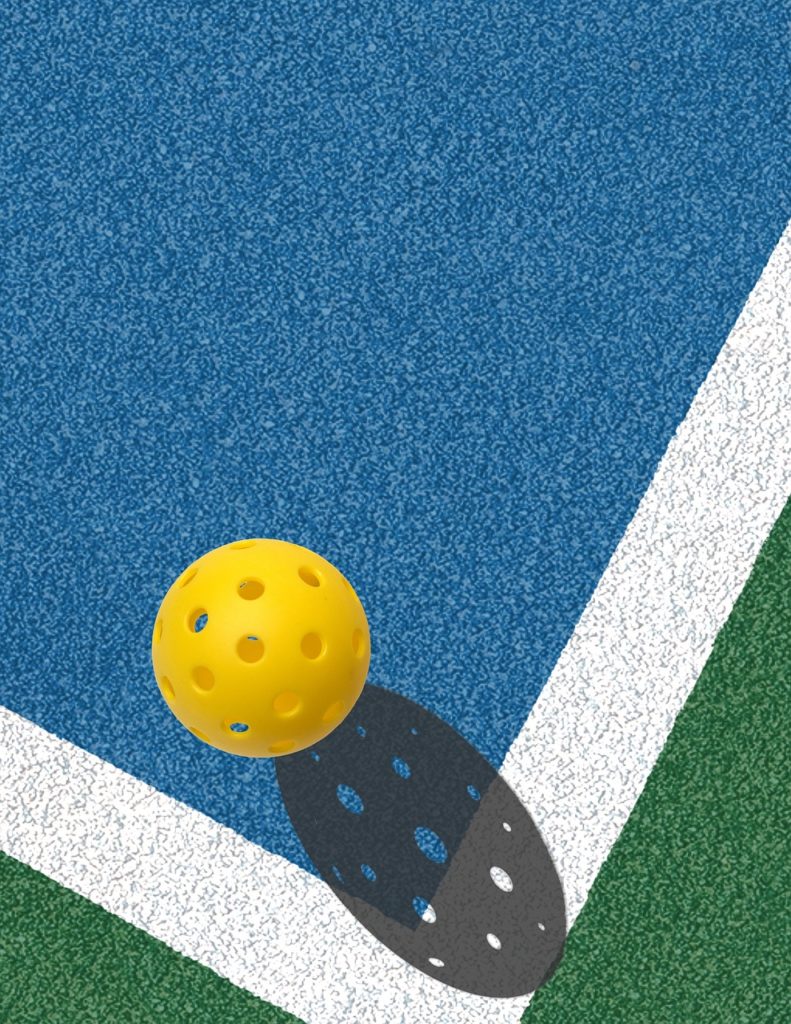Pickleball is a sport that has taken the athletic world by storm in recent years. What started as a simple backyard game has become a highly competitive sport with dedicated athletes, professional tournaments, and millions of players worldwide. Blending elements from tennis, badminton, and table tennis elements, pickleball offers an exciting and fast-paced gameplay that appeals to athletes of all ages and skill levels. Andrew Pesner dives deeper into the pickleball phenomenon and explores how it has become one of the fastest-growing sports in the world.

Benefits of Pickleball
Pickleball is an exciting sport that offers its players numerous physical, mental, and social benefits. One of the main benefits of pickleball is that people of all ages and skill levels can play it. Unlike other sports that may require a certain level of fitness or physical ability, pickleball can be enjoyed by everyone, from young children to seniors. This inclusivity is one of the reasons why pickleball has become so popular, as it allows individuals from different generations and backgrounds to come together and enjoy a fun, competitive game.
In addition to being accessible to all, pickleball offers numerous health benefits. Playing pickleball regularly can improve hand-eye coordination, balance, and agility. The fast-paced nature requires players to constantly move and react, making it a great form of cardiovascular exercise. Furthermore, the small court size and slower pace compared to sports like tennis put less stress on the joints, making it a lower-impact option for those with joint issues or injuries.
Growing and Popularity of Pickleball
Over the past decade, pickleball has experienced a surge in popularity, with players of all ages and skill levels drawn to its unique blend of tennis, badminton, and ping-pong. According to the Sports & Fitness Industry Association’s annual survey, pickleball was named the fastest-growing sport in America for the second consecutive year in 2020. The number of pickleball players increased by over 20% from the previous year, with an estimated 3.3 million participants in the United States alone.
The growth of pickleball can also be seen in its increasing presence in schools and community centers. Many physical education programs have started incorporating pickleball into their curriculum, introducing a new generation of athletes to the sport. Community centers and retirement communities have also started to offer pickleball as an activity, catering to the growing demand for the sport among all age groups. Additionally, pickleball tournaments and leagues are becoming more prevalent, providing players opportunities to compete and showcase their skills.
Accessibility and Inclusivity
One of the major reasons for the rapid growth of pickleball is its accessibility and inclusivity. The sport can be played on different surfaces, including indoor and outdoor courts, making it accessible to players in all climates. The smaller court size also means that pickleball can be played in less space than other sports like tennis or basketball, allowing more communities access to the sport.
In addition, pickleball is a sport that people of all ages and abilities can play. The game can be adapted to skill levels, from beginner to advanced players. This inclusivity has attracted many individuals who may not have had the opportunity to participate in other sports due to age or physical limitations. As a result, pickleball has become a way for people to stay active and socialize regardless of their background or circumstances.
Community and Culture
The pickleball community is known for its welcoming and inclusive culture, making it easy for new players to feel like a part of the sport. Many players often form lasting friendships with their fellow competitors, creating a strong sense of community within the sport. Pickleball tournaments and events also foster a fun and supportive atmosphere, encouraging players to compete while maintaining good sportsmanship.
The culture of pickleball is also one of continuous learning and improvement. As a relatively new sport, there is always something new to learn and improve upon, making it an exciting challenge for players of all levels. The sense of community within the sport also extends to helping each other improve skills and strategies, creating a supportive environment for growth and development. This sense of camaraderie and constant improvement keeps many players returning to pickleball and contributes to its growing popularity.
Professionalization of Pickleball
As pickleball continues to gain popularity, there has been an increase in the professionalization of the sport. Professional pickleball players can now make a career by playing and promoting the sport through tournaments, sponsorships, and endorsements. With the rise in popularity, there has also been an increase in high-level competitions, such as the US Open Pickleball Championships, where professional players can compete for significant prizes.
The growth of professional pickleball has also led to the development of training programs and coaching certifications, allowing players to improve their skills and potentially pursue a career in the sport. This professionalization benefits players and contributes to pickleball’s overall growth and credibility as a serious sport. As more people see pickleball as a legitimate and viable career option, it further solidifies the sport’s place in the sports world.
Final Thoughts
Pickleball’s accessibility, inclusivity, and community-oriented culture have contributed to fast growth and popularity in recent years. The sport offers numerous health benefits and attracts players of all ages and skill levels. As it becomes more professionalized, pickleball is gaining recognition as a serious sport with potential career opportunities for dedicated players. With its welcoming community, exciting gameplay, and growth potential, it is no surprise that pickleball’s popularity shows no signs of slowing down. Whether you are a seasoned player or just discovering the sport, one thing is for certain – pickleball is here to stay.